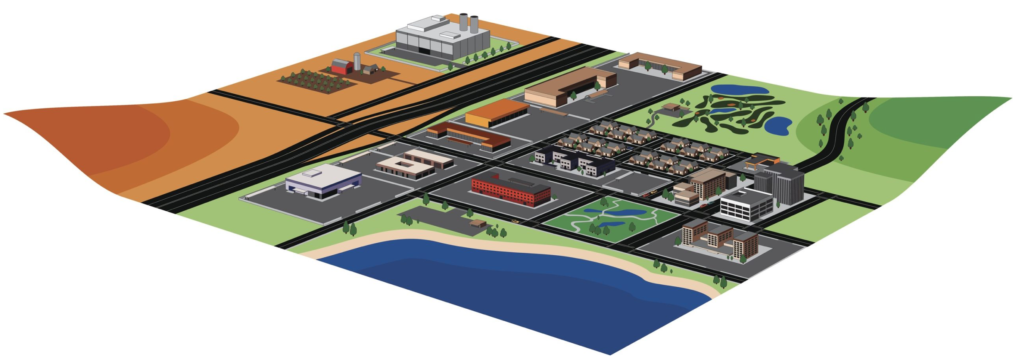
One of the most consequential housing bills before lawmakers this year — Assembly Bill 2011 — is designed to address California’s housing crisis by making it easier to convert unused commercial space into new homes. While the legislation focuses on housing strategies, it is also critically important environmental policy.
AB 2011 would streamline approvals to convert unused commercial space — empty strip malls, office parks and parking lots — into affordable and mixed-income housing as long as the projects meet objective planning and zoning standards and adhere to specific affordability, labor and environmental criteria.
Over the last two years, the shift to remote work and online shopping has increased the stock of empty office and retail properties. By reimagining underutilized commercial land, we can create hundreds of thousands of homes in environmentally friendly locations that don’t encroach on natural and working lands.
For too long, California housing policy has made it cheaper and easier to sprawl. We are not building enough homes in existing communities near jobs, transit and schools, and instead force new development farther and farther into remote areas — often with devastating human and environmental consequences. Long commutes are increasing vehicle miles traveled and carbon emissions while also putting more and more people into high fire-risk areas. This disproportionately affects lower-income Californians — who are forced away from job centers to find housing they can afford — and communities of color, who are 50% more vulnerable to the long-term destructive effects of wildfire.
If we can preserve forests, shrublands/chaparral, croplands, wetlands and other lands, we will protect biodiversity and make ourselves more resilient to severe fires, floods and drought. These areas also are crucial for carbon sequestration — the ability of plants and natural habitats to draw carbon back out of the air. In its most recent draft scoping plan evaluating progress on climate change goals, the California Air Resources Board affirmed that electric vehicles won’t be enough to reach our targets; open space is essential to limit the effects of climate change.
By better using the land we already have developed, we can both protect natural lands and come closer to meeting our housing goals. A recent case study from Urban Footprint found that households on commercial corridors affected by AB 2011 would use 40% less water, drive 33% fewer miles and produce up to 45% fewer greenhouse gas emissions.
Developed by affordable-housing advocates and the state carpenters union, AB 2011 prioritizes the needs of lower-income Californians. The bill provides streamlined approval for 100% affordable housing in infill areas zoned for retail, offices and parking. Mixed-income developments require at least 15% affordable housing and would be limited to commercial streets with two to three lanes in both directions. The bill also sets new standards to improve pay for construction workers, protect against wage theft and provide health insurance on larger projects.
After decades of defending natural lands and habitats while watching California’s housing crisis worsen, it has become clear to us that our housing and climate crises are inextricably linked. Environmental advocates who work to preserve habitats and green spaces from development have a responsibility to also help find environmentally sound alternative locations for much-needed housing. While new policies that affirmatively protect open space also are critically needed, policies that make it easier to build infill housing will help reduce the pressure on biological resources and farmland.
We now find ourselves with hundreds of thousands of acres of vacant and underutilized commercial properties near city centers, jobs, transit, services and amenities. It’s clear where we should be concentrating development in order to build resilient communities and protect our planet. If legislators are serious about addressing housing and climate change in California in a meaningful way, they should support AB 2011.